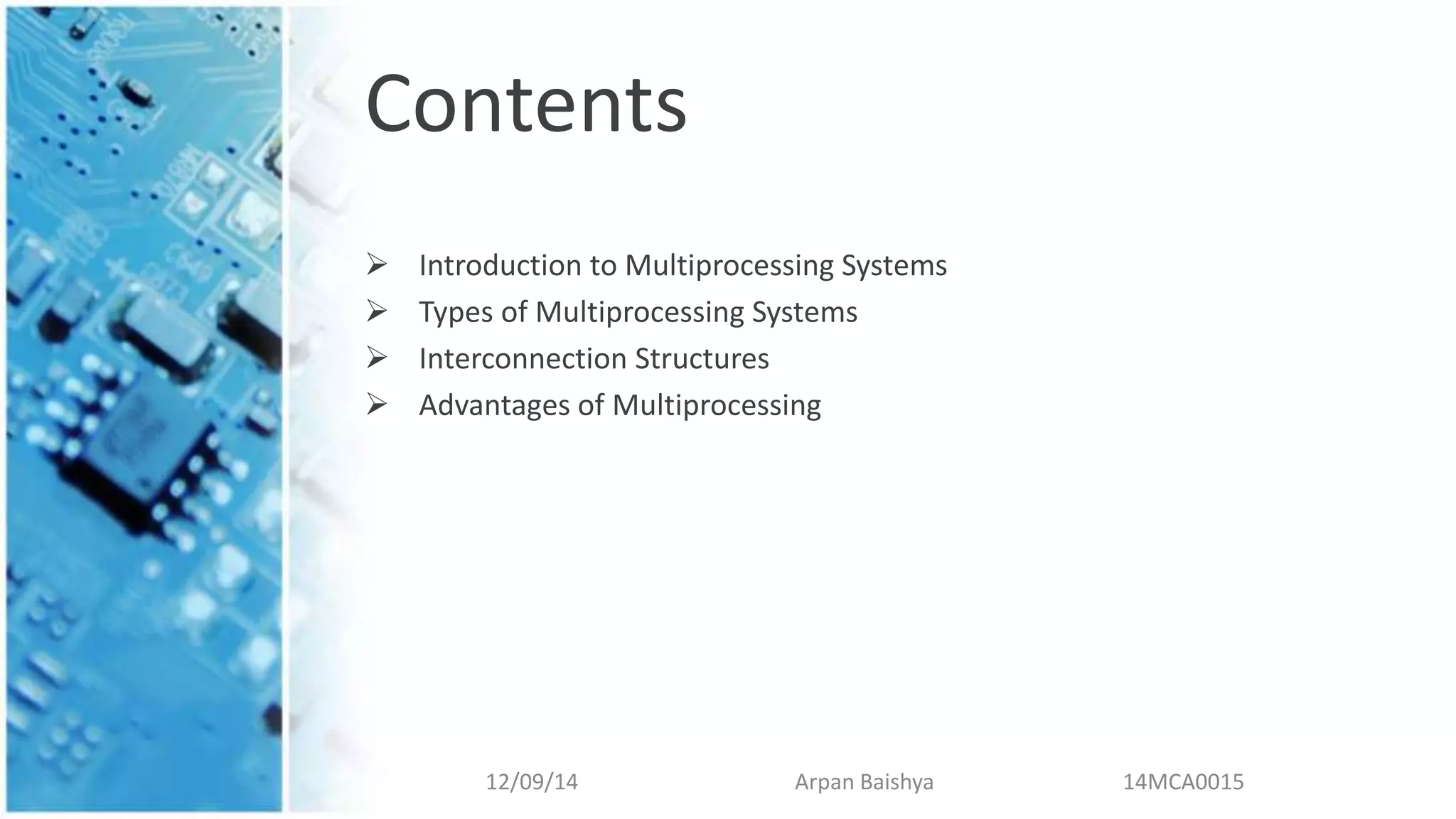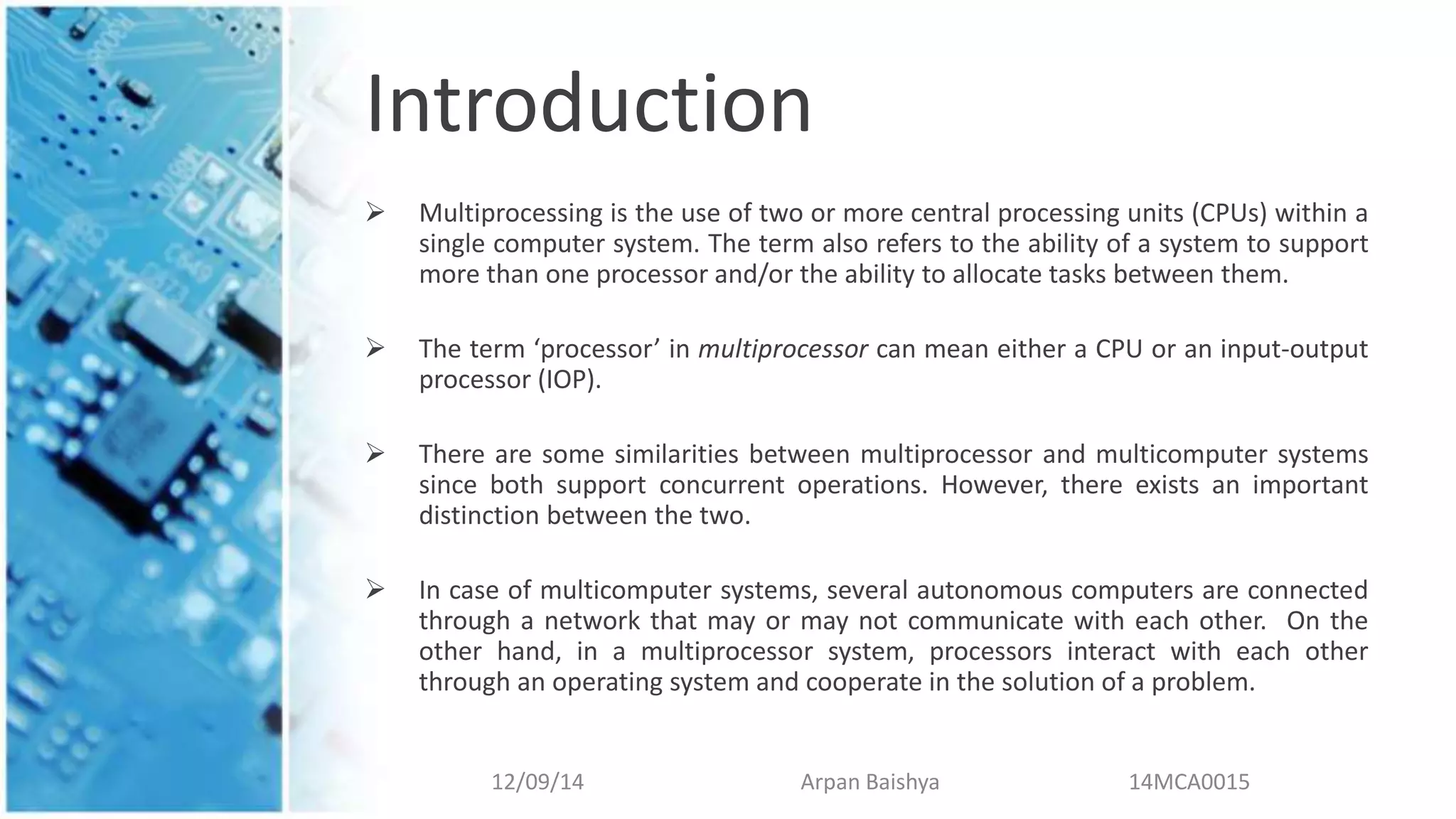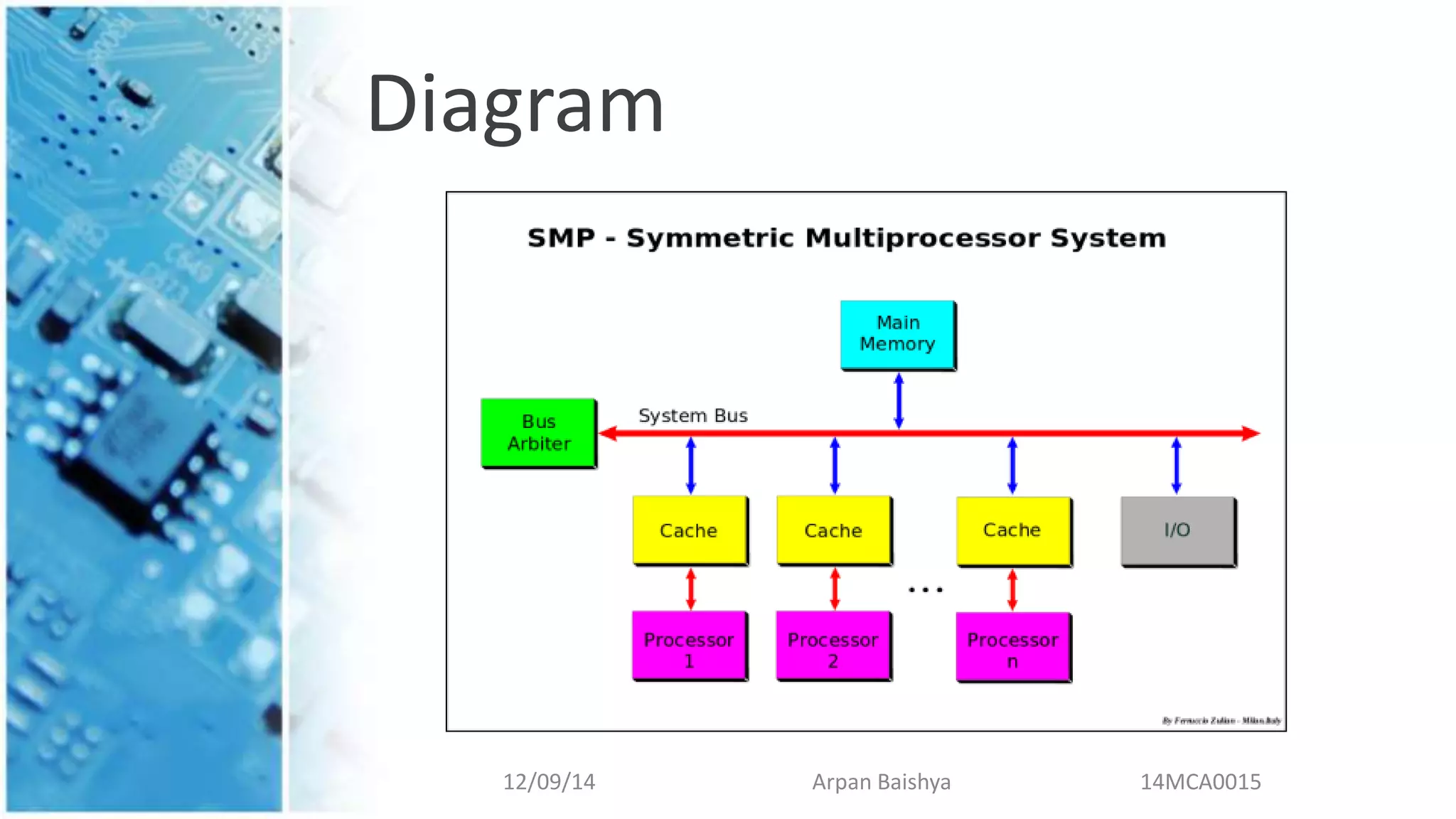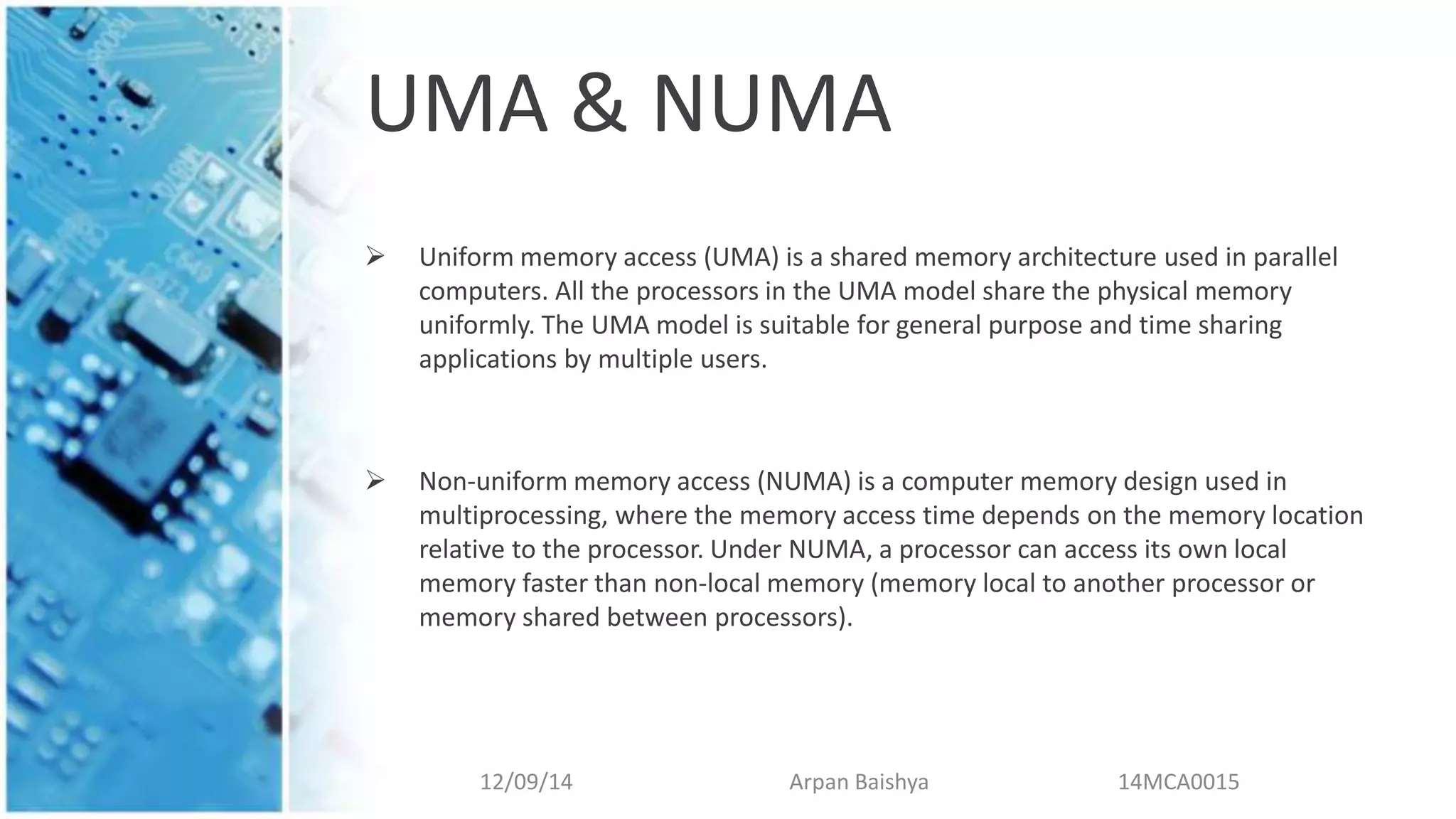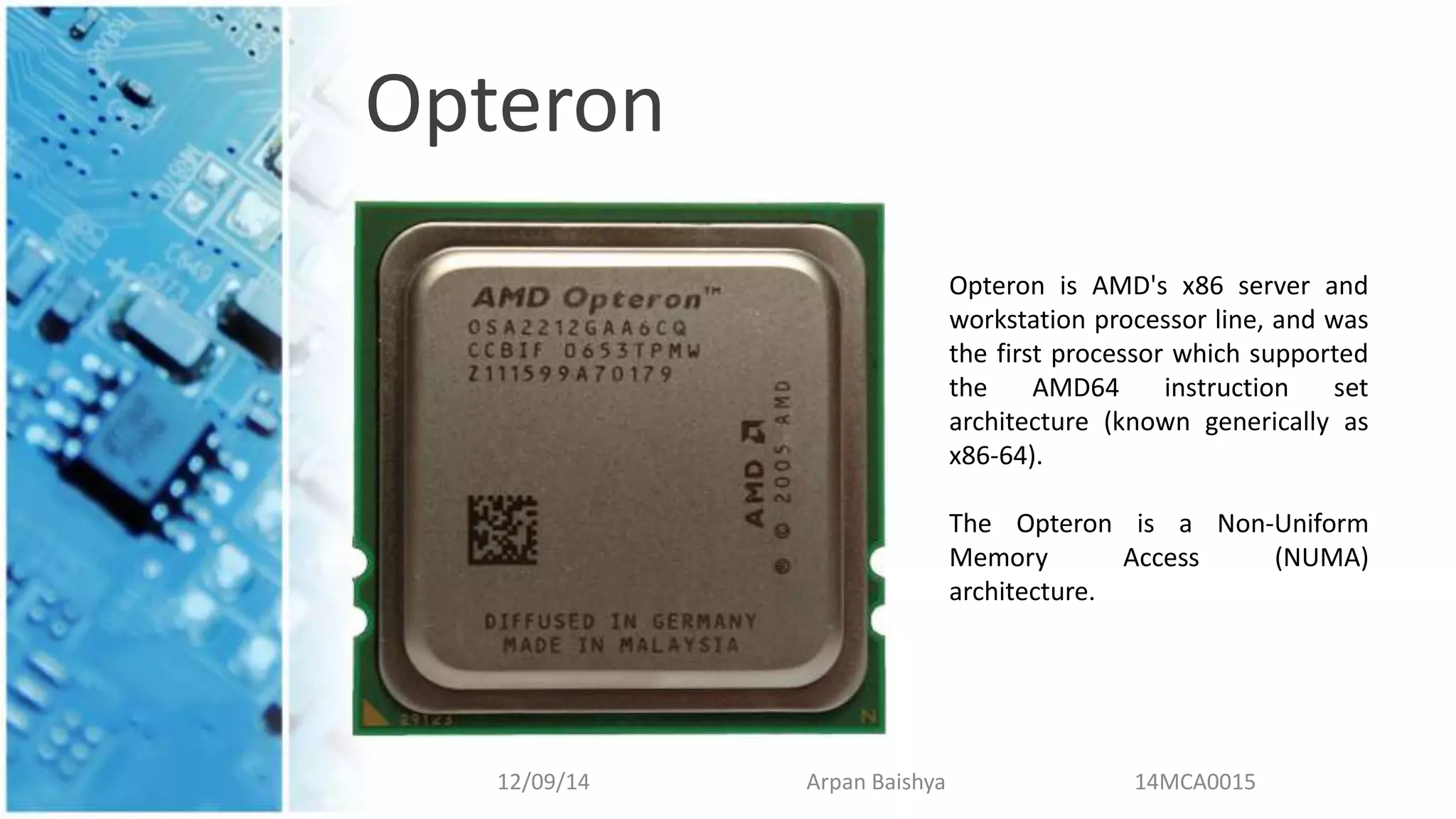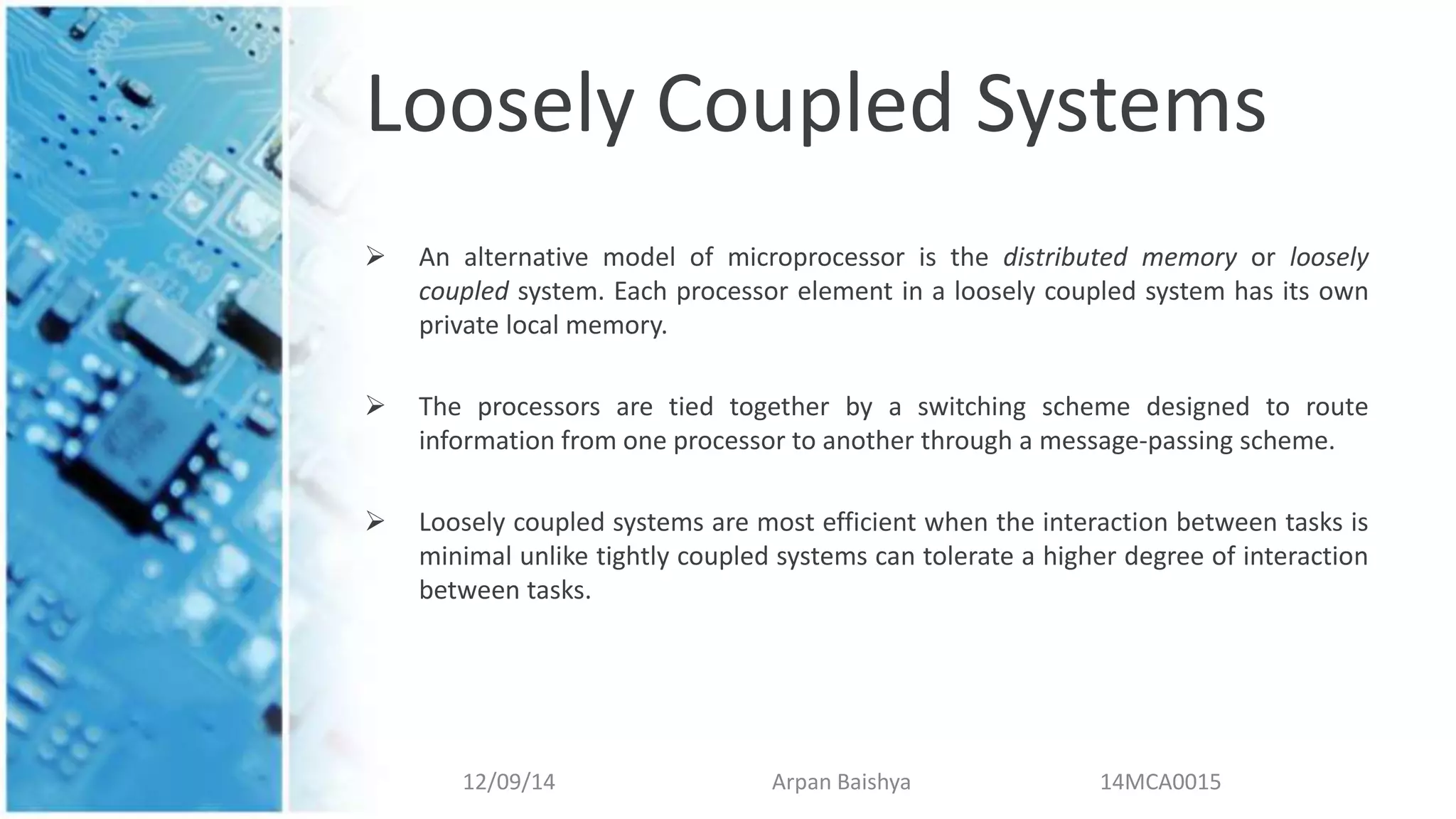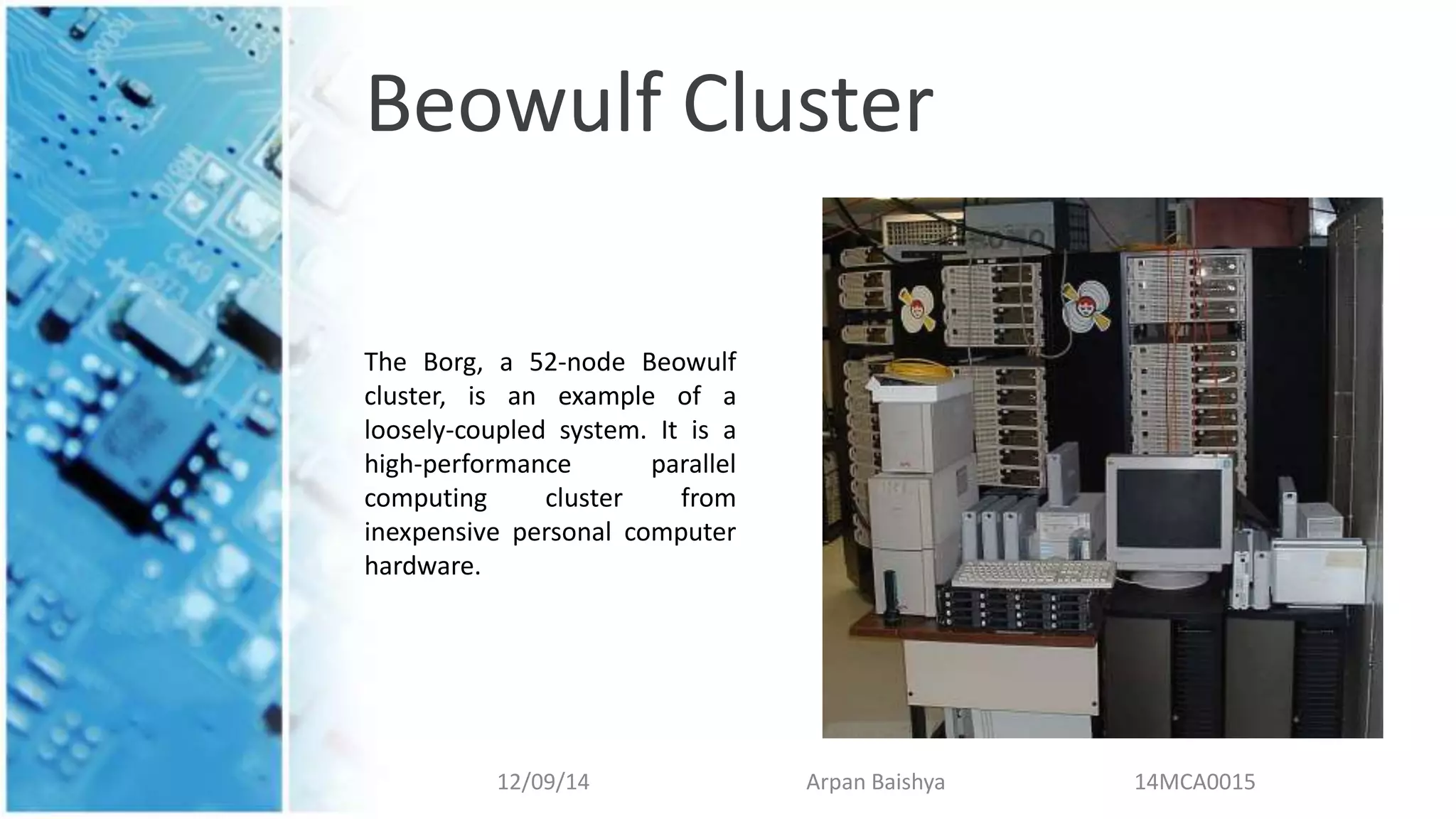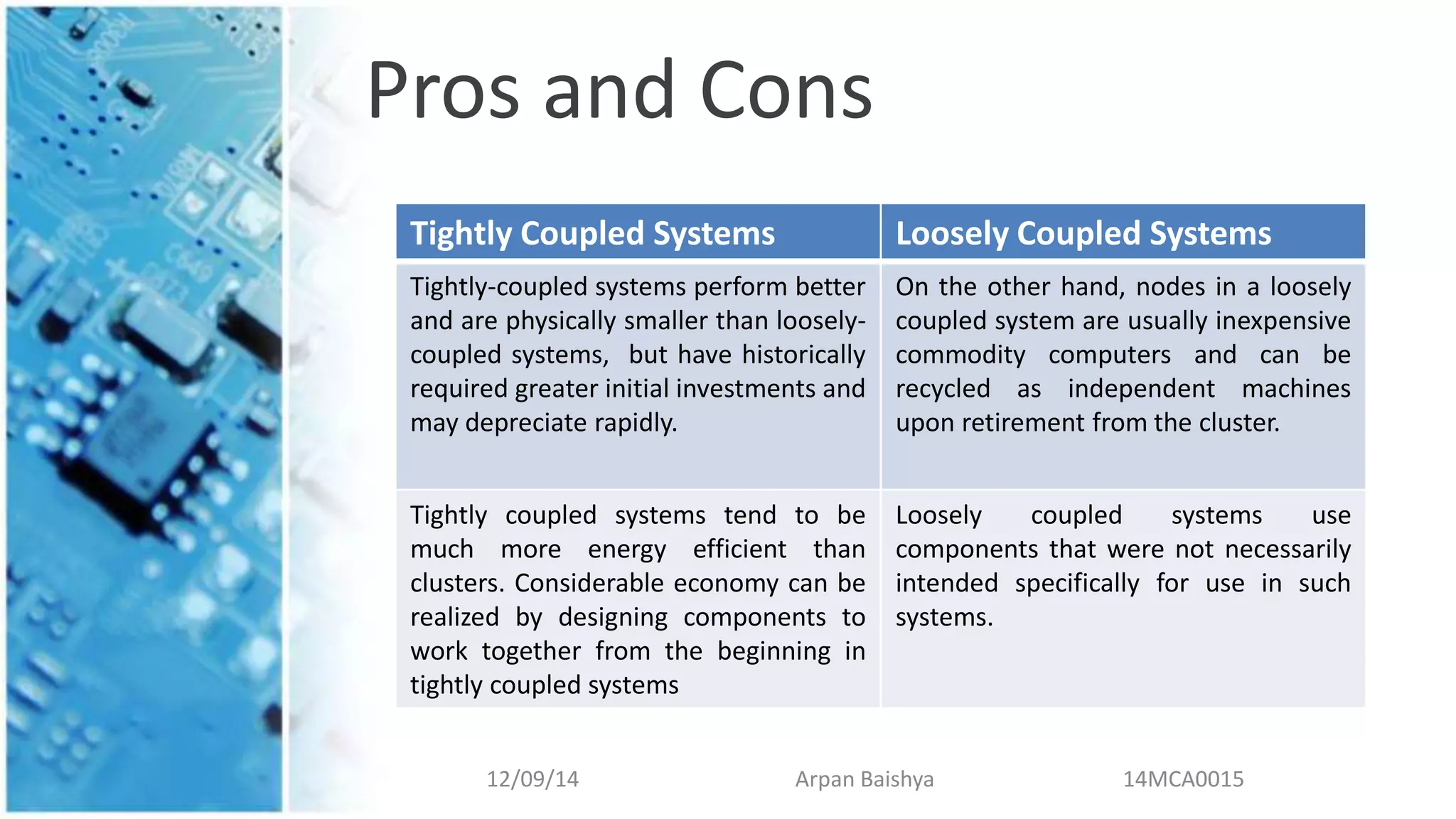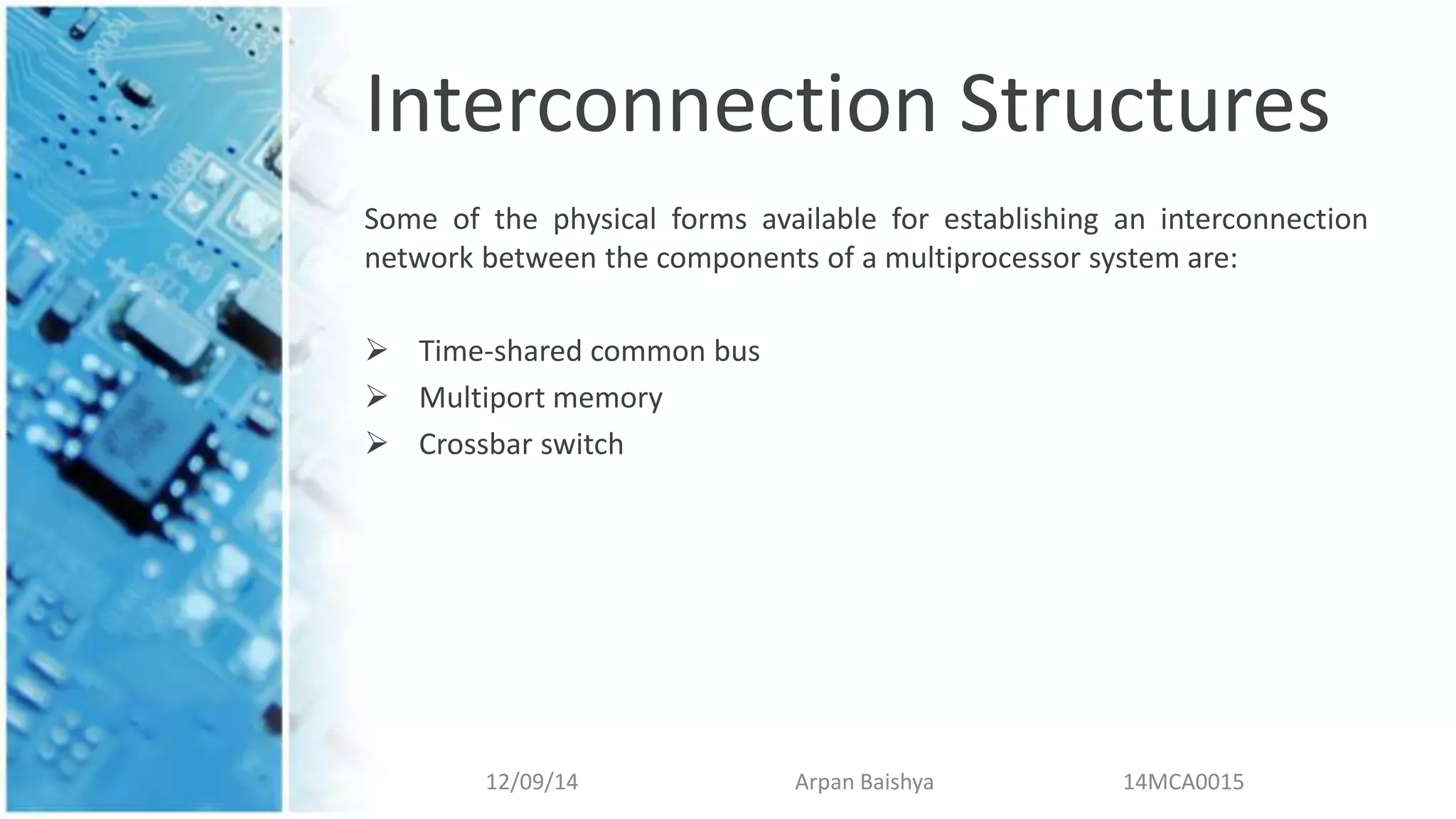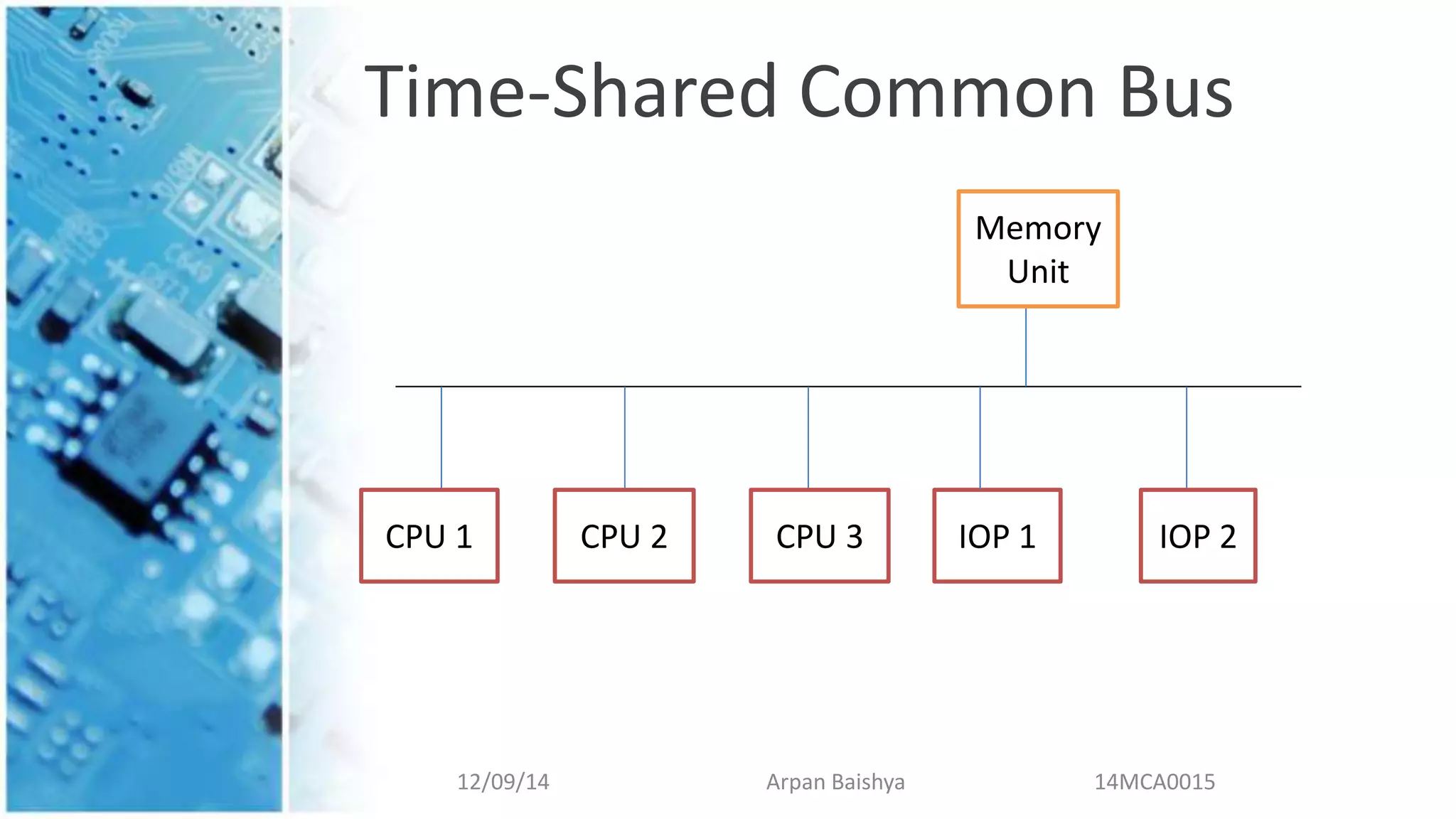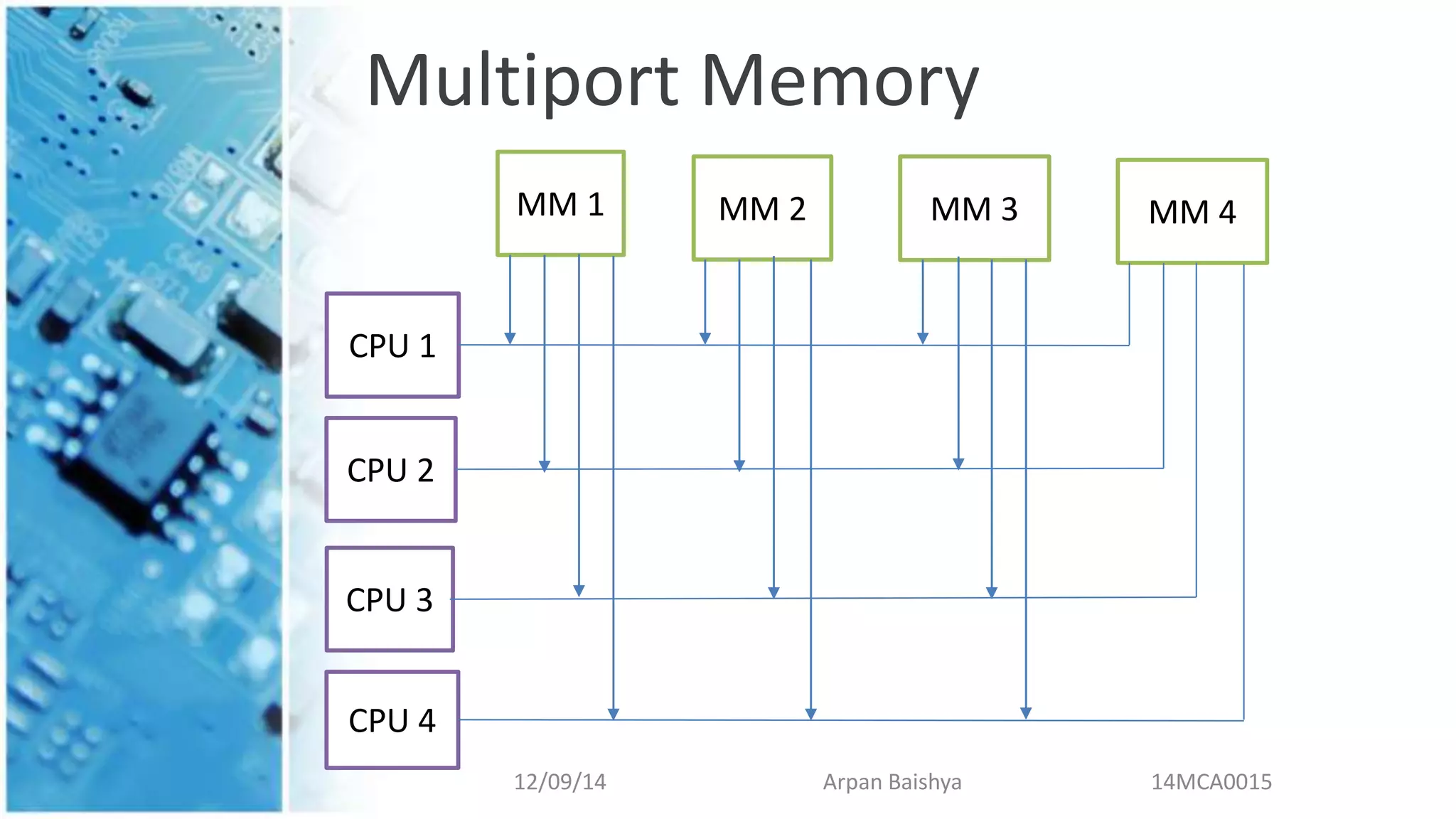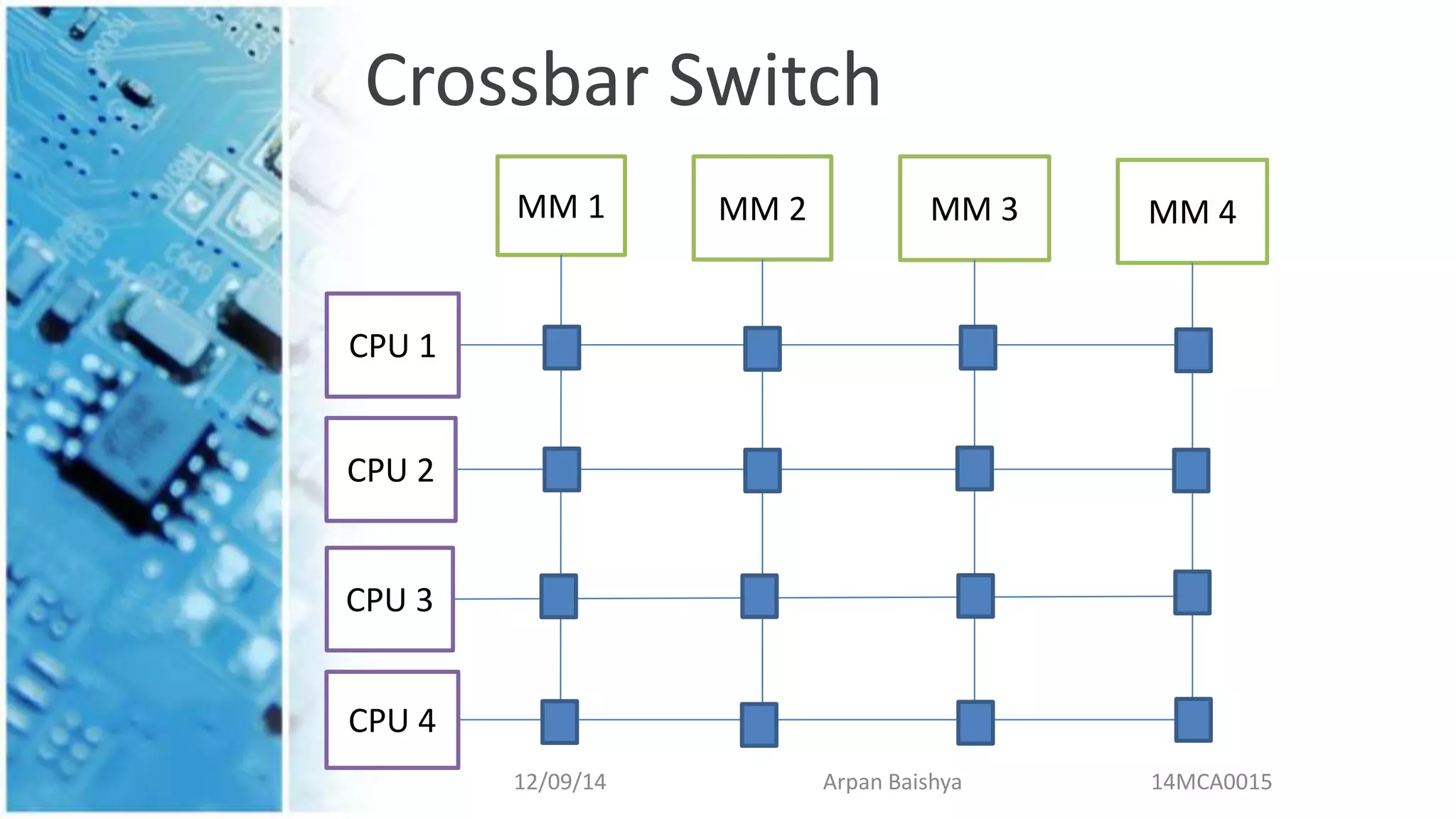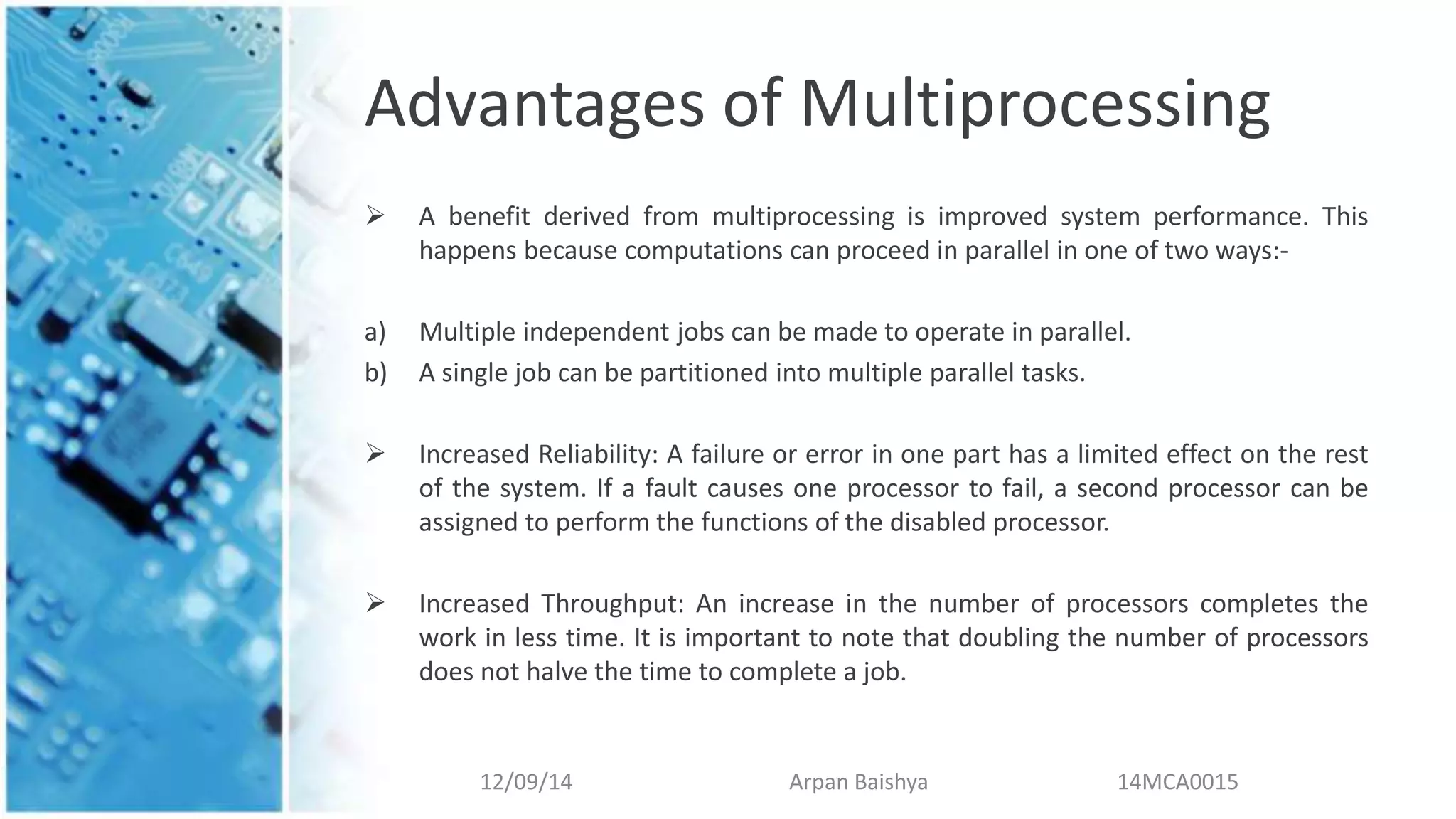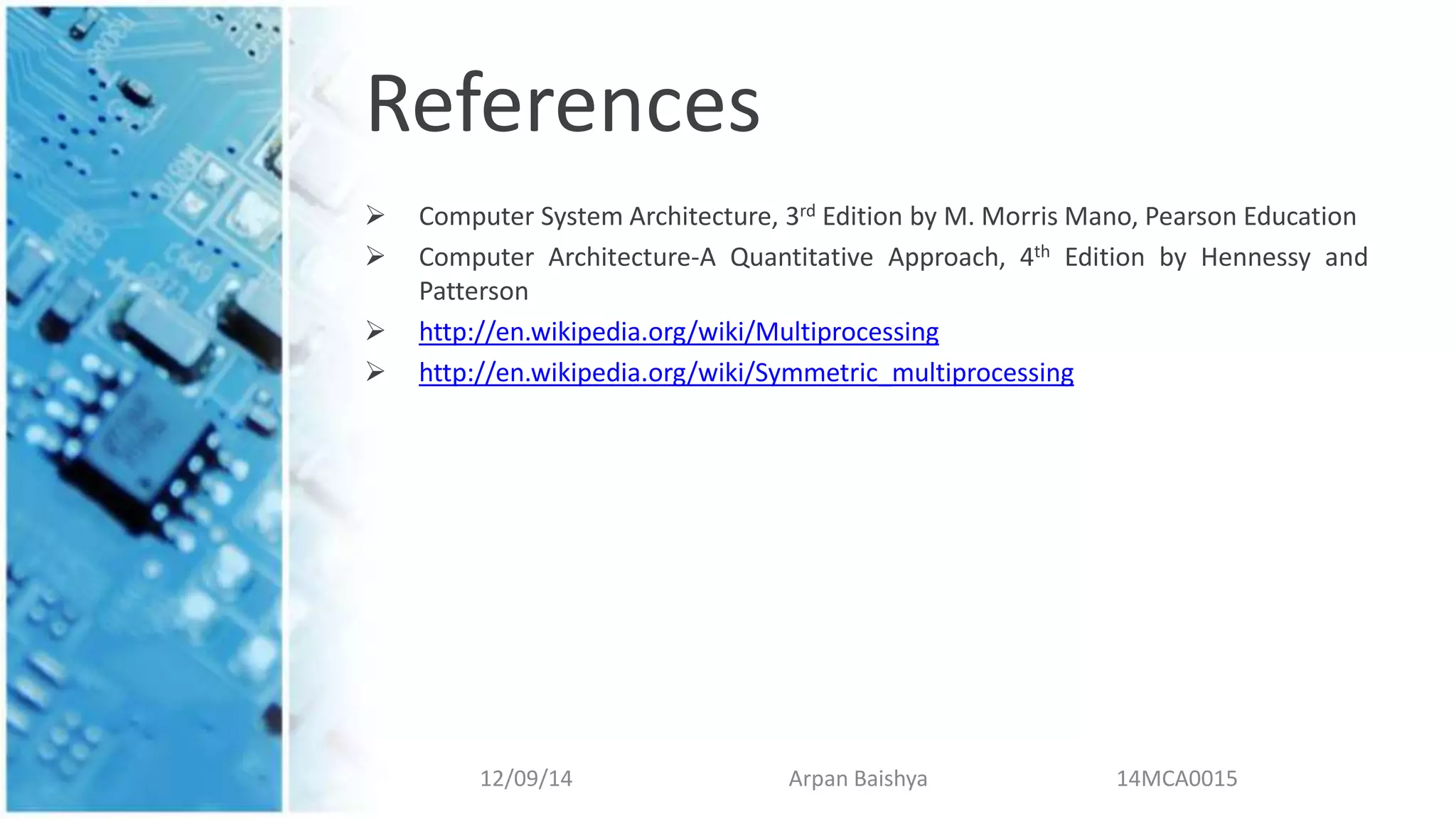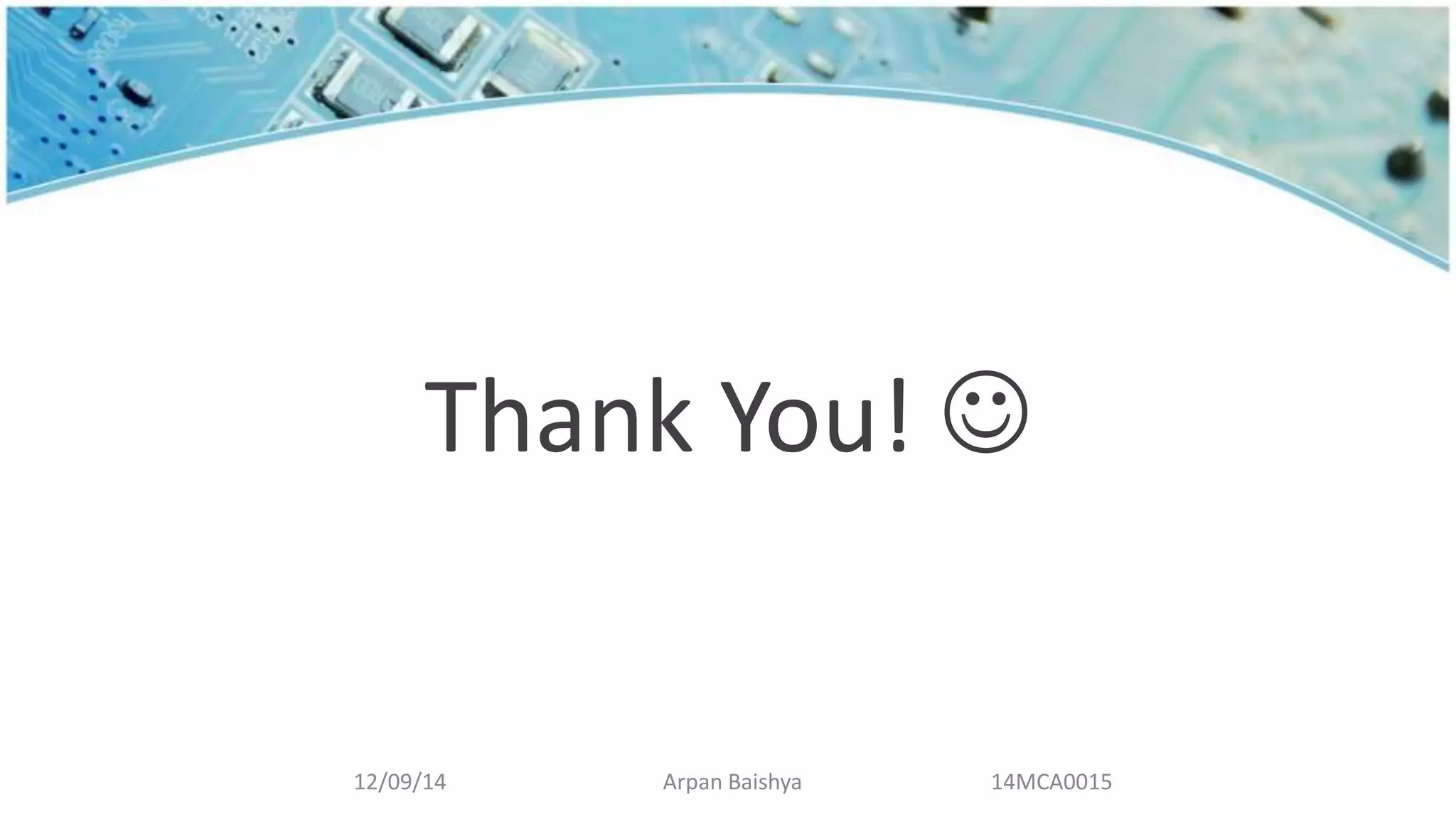This document discusses multiprocessor architecture types and limitations. It describes tightly coupled and loosely coupled multiprocessing systems. Tightly coupled systems have shared memory that all CPUs can access, while loosely coupled systems have each CPU connected through message passing without shared memory. Examples given are symmetric multiprocessing (SMP) and Beowulf clusters. Interconnection structures like common buses, multiport memory, and crossbar switches are also outlined. The advantages of multiprocessing include improved performance from parallel processing, increased reliability, and higher throughput.

